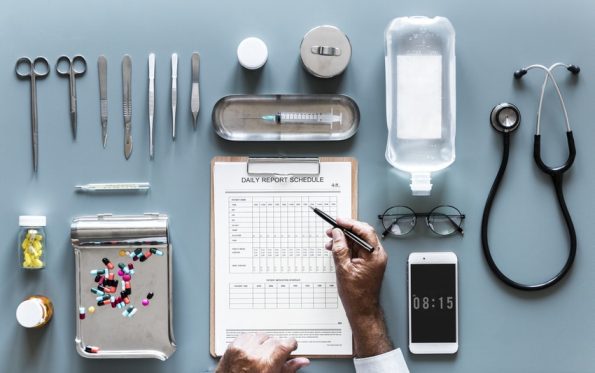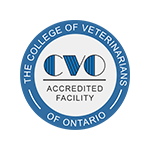
Pet owners often call to find out the cost of ‘fixing’ their new puppy or kitten. This procedure, while routine, is a major surgery and there are a lot of steps involved in ensuring it is completed safely and with the comfort of the pet in mind. It is important to know what is involved with this surgery to better understand the costs. Check out the list below (everything that may contribute to the cost is bolded):
Before the operation
- Prior to a spay your veterinarian will want to perform a complete physical exam on your pet. This helps to determine if there are pre-existing conditions, like a heart murmur, that may affect the safety of the anesthetic and/or surgery
- Pre operative examinations can also determine if there are procedures in addition to the spay surgery that should be performed at the same time. Some examples of additional procedures include removal of baby teeth that didn’t fall out on their own, repair of umbilical hernia, or removal of hind dewclaws (dogs).
- Blood testing is performed to determine if your pet has normal blood counts and platelets to withstand surgery, as well as determine if there are any red flags with the major metabolising organs (liver and kidneys) as good organ function is required to have a smooth and safe recovery from anesthetic. Blood proteins are also checked as these play a crucial role in healing after surgery.
During the operation
- To transition the pet smoothly into anesthesia and begin some of the pain control, a sedative is administered by injection
- Next, an i.v. catheter is placed in the vein. This gives access to the circulatory system to inject additional medications used to induce general anesthesia. It is also important to have this access to give life-saving medications in the event of an emergency.
- To maintain the anesthetic, a breathing tube is placed and a mixture of oxygen and anesthetic gases are taken in with each breath. The amount of anesthetic gas administered is continually adjusted throughout the procedure to give only as much as is needed to maintain general anesthesia, based on close monitoring of vital signs and anesthetic depth.
- The surgical area is shaved and treated with a three part anti-septic cleansing protocol to ensure the area is not contaminated prior to surgery.
- To monitor vital signs, monitoring equipment is attached to the pet. In addition to basic information like respiratory rate and heart rate, monitors tell the veterinarian the patient’s blood pressure and blood oxygenation. The values from the monitor are recorded, interpreted, and acted upon by a dedicated veterinary technician as well as the attending veterinarian.
- To help maintain normal blood pressure, good circulation, and replace some of the fluid lost during surgery, electrolyte fluids are administered through the i.v. catheter throughout the surgery.
- Anesthesia tends to lower body temperature, so to maintain body temperature a warming blanket is used throughout the surgery.
- Additional pain management is provided by applying a local anesthetic (freezing) to the area that will be incised.
- Sterile surgical gowns, gloves, drapes, instruments, blades, and suture materials are used to remove the ovaries and uterus (spay) or the testicles (neuter).
After the operation
- The body temperature is monitored to determine if additional warming methods are needed. There is also ongoing monitoring to ensure the pet is maintaining normal vital signs through the anesthetic recovery.
- Further pain control is administered by way of a pain relief injection
- The fluid therapy is continued to maintain good hydration throughout the recovery period and help to flush out the anesthetic medications used.
- A post operative examination ensures the incision looks normal without any abnormal bruising or discharge. This exam also helps determine when the pet is recovered sufficiently for discharge.
The Recovery Period
- Anti-inflammatory pain control medications are dispensed for at home administration to keep the pet comfortable in the days following the surgery.
- E-collars are used to prevent the pet from licking the surgical site.
- Any concerns of the pet owner through the recovery period are addressed, either through discussions with the veterinarian, e-mail correspondence, or recheck examinations
- A follow up exam is performed to ensure the incision has healed properly and give the go ahead to return to normal activity.
If you are interested in spaying or neutering your pet, give us a call. We will review a plan tailored to your pet based on a no-charge initial assessment and give you a full breakdown of the anticipated costs. We are also happy to answer any questions you may have during this visit.



